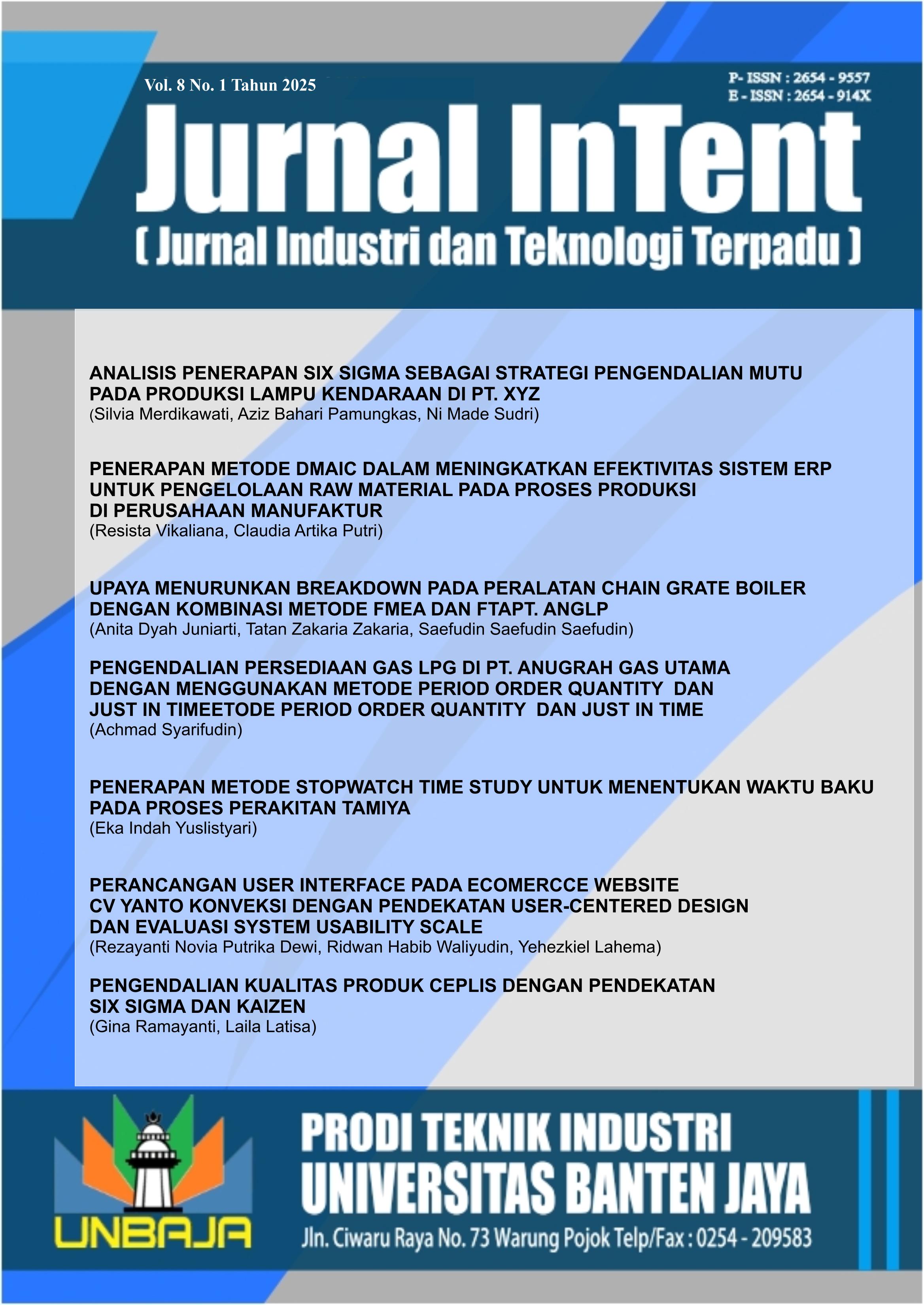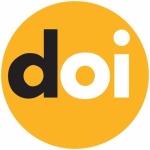PENERAPAN METODE DMAIC DALAM MENINGKATKAN EFEKTIVITAS SISTEM ERP UNTUK PENGELOLAAN RAW MATERIAL PADA PROSES PRODUKSI DI PERUSAHAAN MANUFAKTUR
DOI:
https://doi.org/10.47080/n5x0w952Keywords:
Enterprise Resource Planning, DMAIC, raw material management, production efficiencyAbstract
The implementation of the Enterprise Resource Planning (ERP) system has become an important solution in raw material management in manufacturing companies, including PT IMR Arc Steel. This study aims to analyze the effectiveness of ERP systems using the DMAIC (Define, Measure, Analyze, Improve, Control) method in improving the efficiency of raw material management in the production process. This method helps identify key issues, such as raw material quality mismatches and errors in stock recording, which impact the smooth production process. Through the implementation of the DMAIC stage, it was found that the ERP system is able to provide significant improvements in terms of coordination between departments, improve the quality of raw material management, and reduce errors in production. The improvement steps implemented in the improvement stage, such as improving quality checks and optimizing communication, have succeeded in improving the company's performance. Nevertheless, some challenges such as machine maintenance and storage capacity still require further attention. This study concludes that the implementation of the ERP system with the DMAIC method has been effective in increasing the efficiency of the production process at PT IMR Arc Steel, although continuous evaluation and improvement are needed for more optimal results.
References
Arisandy, D., Mikroskil, S., & Thamrin, J. (2011). The Impact of Enterprise Resource Planning (ERP) Implementation Toward Improving Company Business Productivy (Case Study : PT XYZ). 124(112).
Azis, D., & Vikaliana, R. (2023). Pengendalian Kualitas Produk Menggunakan Pendekatan Six Sigma Dan Kaizen Sebagai Usaha Pengurangan Kecacatan Produk. Jurnal Intent: Jurnal Industri dan Teknologi Terpadu, 6(1), 37–53. https://doi.org/10.47080/intent.v6i1.2596
Buonanno, G., Faverio, P., Pigni, F., Ravarini, A., Sciuto, D., & Tagliavini, M. (2005). Factors affecting ERP system adoption. Journal of Enterprise Information Management, 18(4), 384–426. https://doi.org/10.1108/17410390510609572
Boudreau, M., & Robey, D. (2005). Enacting Integrated Information Technology: A Human Agency Perspective. Organization Science, 16(1), 3–18. https://doi.org/10.1287/orsc.1040.0103
Cholifaturochmah, C., Widyaningrum, D., & Jufriyanto, M. (2022). Upaya Mengurangi Waste Pada Produksi Kerudung Dengan Penerapan Metode Lean Six Sigma Di Umkm Arryna Raya. JISI: Jurnal Integrasi Sistem Industri, 9(1), 37. https://doi.org/10.24853/jisi.9.1.37-45
Gibson, N., Holland, C. P., & Light, B. (1999). Enterprise resource planning: a business approach to systems development. https://doi.org/10.1109/HICSS.1999.772816
Hazen, B. T., Mollenkopf, D. A., & Wang, Y. (2017). Remanufacturing for the Circular Economy: An Examination of Consumer Switching Behavior. Business Strategy and the Environment, 26(4), 451–464. Https://Doi.Org/10.1002/Bse.1929
Kasemsap, K. (2015). Implementing Enterprise Resource Planning. https://doi.org/10.4018/978-1-4666-5888-2.CH076
Luh, N., & Indrayani, A. (2022). Penerapan Sistem Enterprise Resource Planning (ERP) pada Perusahaan Jasa Konstruksi. In Crane : Civil Engineering Research Journal (Vol. 3). https://ojs.unikom.ac.id/index.php/craneNiLuh/CRANE/2022
Murnawan, H. (2016). Perencanaan Produktivitas Kerja Dari Hasil Evaluasi Produktivitas Dengan Metode Fishbone Di Perusahaan Percetakan Kemasan Pt.X. Heuristic, 11(01), 27–46. https://doi.org/10.30996/he.v11i01.611
Naslund, D., & Williamson, S. (2015). What is Management in Supply Chain Management?-A Critical Review of Definitions, Frameworks and Terminology. https://www.researchgate.net/publication/266862676
Nasution, D. R., Hasibuan, A., & Sibuea, S. R. (2023). Pengendalian Kualitas CPO untuk Meminimumkan ALB Menggunakan Metode DMAIC. Blend Sains Jurnal Teknik, 1(4), 333–342. https://doi.org/10.56211/blendsains.v1i4.190
Nuh Kartini, I., & Jayanthi Syarief, D. (2018). Quality Control Analysis With Six Sigma-Dmaic Method in Effort Reduce Num-Ber of Sugar Products at PT PG. Gorontalo Quality Control Analysis with Six Sigma-Dmaic Method in Effort Reduce Number of Sugar Products at PT.
PG Gorontalo (Vol. 8).
Ram, J., & Corkindale, D. (2014). How “critical” are the critical success factors (CSFs)?: Examining the role of CSFs for ERP. Business Process Management Journal, 20(1), 151–174. https://doi.org/10.1108/BPMJ-11-2012-0127
Sumasto, F., Satria, P., & Rusmiati, E. (2022). Implementasi Pendekatan DMAIC untuk Quality Improvement pada Industri Manufaktur Kereta Api. Jurnal INTECH Teknik Industri Universitas Serang Raya, 8(2), 161–170. https://doi.org/10.30656/intech.v8i2.4734Awanis, A., & Vikaliana, R. (2023). Implementation of Lean Manufacturing to Identify and Minimize Waste in The Welding.Framebody Department of PT XYZ. Journal of Emerging Supply Chain, Clean Energy, and Process Engineering, 2(1), 1–15. https://doi.org/10.57102/jescee.v2i1.23.
Azis, D., & Vikaliana, R. (2023). Pengendalian Kualitas Produk Menggunakan Pendekatan Six Sigma Dan Kaizen Sebagai Usaha Pengurangan Kecacatan Produk. Jurnal Intent: Jurnal Industri dan Teknologi Terpadu, 6(1), 37–53. https://doi.org/10.47080/intent.v6i1.2596
Boudreau, M., & Robey, D. (2005). Enacting Integrated Information Technology: A Human Agency Perspective. Organization Science, 16(1), 3–18. https://doi.org/10.1287/orsc.1040.0103
Buonanno, G., Faverio, P., Pigni, F., Ravarini, A., Sciuto, D., & Tagliavini, M. (2005). Factors affecting ERP system adoption. Journal of Enterprise Information Management, 18(4), 384–426. https://doi.org/10.1108/17410390510609572.
Cholifaturochmah, C., Widyaningrum, D., & Jufriyanto, M. (2022). Upaya Mengurangi Waste Pada Produksi Kerudung Dengan Penerapan Metode Lean Six Sigma Di Umkm Arryna Raya. JISI: Jurnal Integrasi Sistem Industri, 9(1), 37. https://doi.org/10.24853/jisi.9.1.37-45
Gibson, N., Holland, C. P., & Light, B. (1999). Enterprise resource planning: a business approach to systems development. https://doi.org/10.1109/HICSS.1999.772816
Kasemsap, K. (2015). Implementing Enterprise Resource Planning. https://doi.org/10.4018/978-1-4666-5888-2.CH076
Murnawan, H. (2016). Perencanaan Produktivitas Kerja Dari Hasil Evaluasi Produktivitas Dengan Metode Fishbone Di Perusahaan Percetakan Kemasan Pt.X. Heuristic, 11(01), 27–46. https://doi.org/10.30996/he.v11i01.611
Prayogi, A., Resista, V., Nasim, E. S., & Irwansyah. (2023). Analisis Faktor Limbah Pada Proses Produksi Mie. Kaizen : Management Systems & Industrial Engineering Journal, 06(01), 53–62.
Ram, J., & Corkindale, D. (2014). How “critical” are the critical success factors (CSFs)?: Examining the role of CSFs for ERP. Business Process Management Journal, 20(1), 151–174. https://doi.org/10.1108/BPMJ-11-2012-0127
Umble, E. J., Haft, R. R., & Umble, M. M. (2003). Enterprise resource planning: Implementation procedures and critical success factors. European Journal of Operational Research, 146(2), 241–257. https://doi.org/10.1016/s0377-2217(02)00547-7
Vikaliana, R., & Difa, R. (2024). Handling Analysis of Liquefied Petrolium Gas in Reducing Waste: A Case Study in Indonesia. https://doi.org/10.4108/eai.24-11-2023.2346372
Downloads
Published
Issue
Section
License
Copyright (c) 2025 Resista Vikaliana, Claudia Artika Putri

This work is licensed under a Creative Commons Attribution-ShareAlike 4.0 International License.






